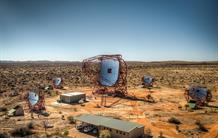
Installed in Namibia, the H.E.S.S.-II observatory has just detected thousands of gamma rays from the Vela pulsar located about 1,000 light years from Earth in the Milky Way. Thanks to a new giant telescope, he has thus located his first pulsar, a neutron star that corresponds to the collapsed heart of a massive star after its supernova explosion. It is the second, after the Crab in 2008, to have been detected by a gamma telescope on the ground. These first results from the H.E.S.S. collaboration, to which CNRS and CEA contribute, augur the possibility of exploring and revealing numerous cosmic sources of gamma rays (supermassive black holes, galaxy clusters, supernovae, double stars and pulsars in particular) in a new energy domain.
Click here to read the press release in French on the CEA website

